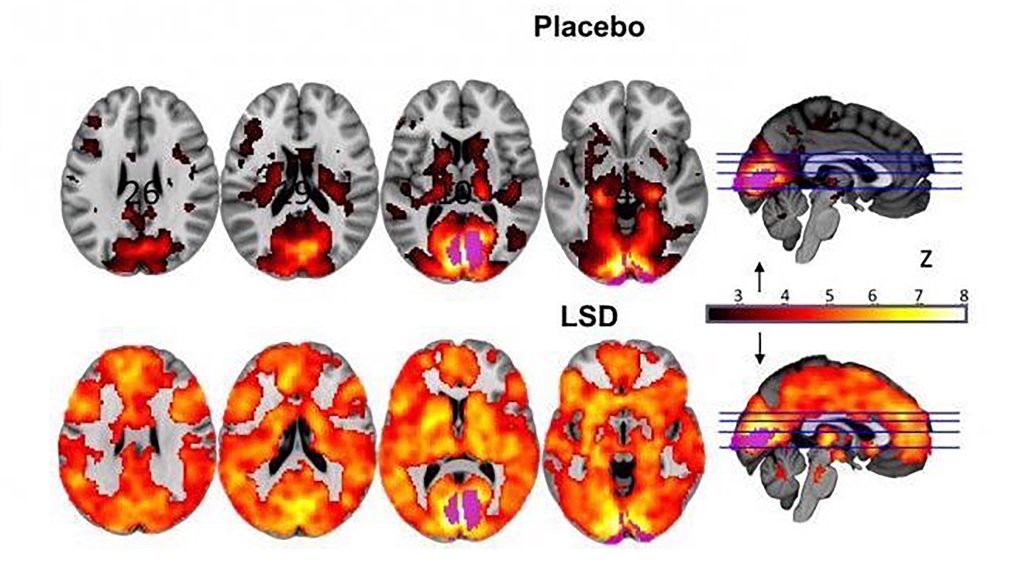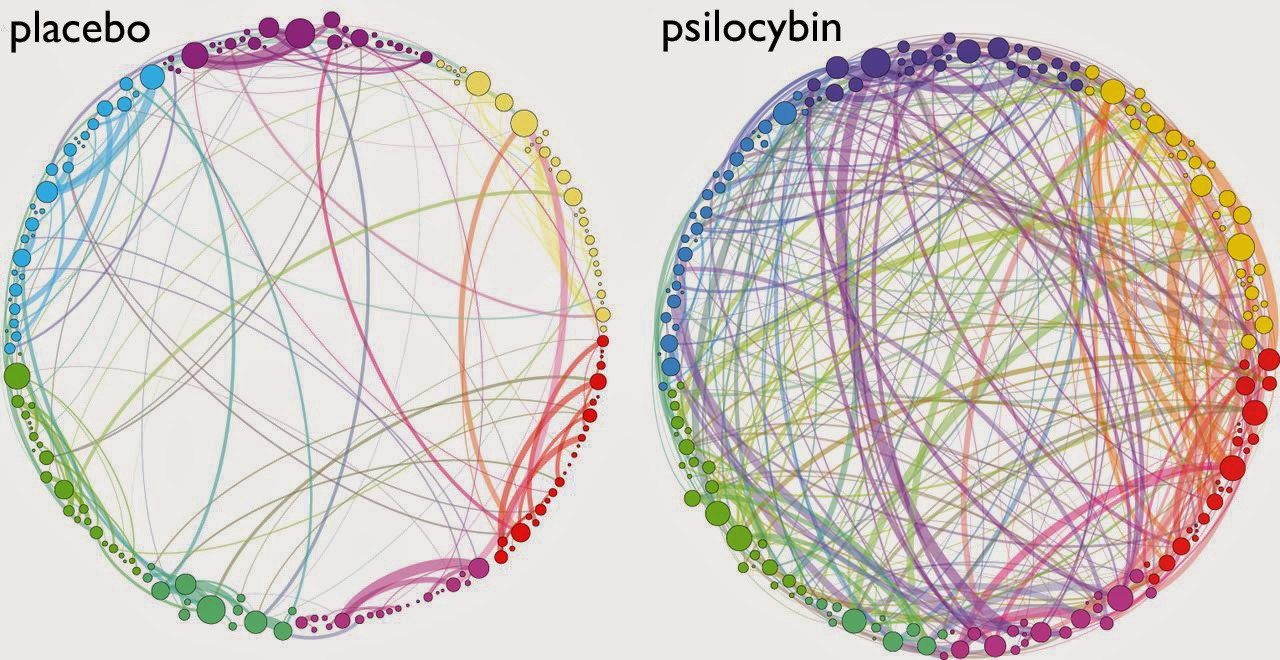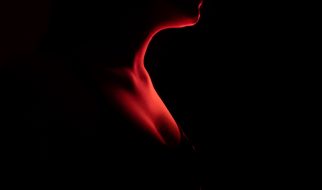Listen to this story
–:–
–:–
 Image Source
Image Source
Recently, I completed a one-year experiment in which I took microdoses of psilocybin ? also known as ?shrooms? or ?magic mushrooms? ? almost daily. My goal was to understand the impact it would have on my work, relationships, and mental health.
I approached the experiment as a relative newcomer to the world of psychedelics. Until the last few years, I wasn?t the kind of person to take recreational drugs. That said, I?m invested in health, mindfulness, and personal growth. I?ve scored in the top 99th percentile for standardized tests, trained and competed in the Olympic sport of speedskating, and run a startup for one of my business idols. Over the last 14 years, to improve my life, I?ve used and refined everything from meditation, yoga, intermittent fasting, paleo, Bulletproof, ketogenic, triathlons, powerlifting, ?lifestyle design?, the ?digital nomad? lifestyle, ?Getting Things Done?, the principles of rationality, and also, nootropics ? or ?smart drugs?.
By the time I was 25, I created a life I was proud of, all while sober. So my perspective on recreational drugs was that anyone dependent on them had major problems they were running away from. I never thought of drugs as conducive to growth.
Fortunately, I was wrong. After taking them in Southeast Asia, my perspective on psychedelics quickly changed, and they became a vehicle for greater self-reflection and awareness. Psychedelics appealed to me in their ability to work through painful emotions of the past. My use of psychedelics has shown various benefits, including reducing my social anxiety and addressing things that even I, a so-called self-improvement fanatic, hadn?t gotten around to facing within myself.
I woke up after my first dose of mushrooms to find my lifelong fear of public speaking gone. After mushrooms, I was exposed to LSD and MDMA, and traveled to Peru for a series of Ayahuasca ceremonies. They worked beyond my wildest expectations. Psychedelics served as eye-opening means for cultivating meaningful personal insight. I healed from childhood traumas I didn?t even know I had.
At one point, I began wondering if there was a sustainable way to leverage the power of psychedelics on a daily basis. It was at this time I became eager to discover whether smaller doses could help improve my work, relationships, and mood.
In the first article of this two-part series on microdosing, I?ll share the findings I came across, both from my personal experiment and the existing scientific research on psychedelics. In the second article, I will share a step-by-step process for experimenting with and exploring microdosing.
Obligatory legal disclaimer: I?m not a doctor, psychiatrist, therapist, or mental health professional. The experiences and writing I share will be for education and harm reduction purposes, and does not condone the use of illegal substances. Please do not use any dose of psychedelics without medical supervision.
![]()
The Effect of Psychedelics on the Brain
My first goal was to discover whether the use of of psychedelic mushrooms would allow me to tap into a more effective and happier side of myself. And if so, what were the risks involved?
My journey to better understand the effects of microdosing led me through the labyrinth of data on psychedelics research.
Key terms and definitions
- Psilocybin ? The psychoactive ingredient in ?magic mushrooms?, or ?shrooms?. It is converted to psilocin, enabling it to cross the blood-brain barrier. Structurally similar to the brain?s naturally occurring neurotransmitter serotonin, the hallucinogenic effects of this substance last between 4?7 hours.
- LSD ? Short for lysergic acid diethylamide, and more commonly known as ?acid?. The effects of a typical dose (100ug) of this substance takes 8?12 hours to subside.
- MDMA ? Also known as ?ecstasy?, ?E?, or ?Molly?, the effects of this drug last approximately 3?5 hours. Pilot studies have shown that 83% of PTSD patients receiving MDMA-assisted psychotherapy no longer met the criteria for PTSD.
- DMT ? Often regarded as the ?spirit molecule? for its ability to bring spiritually profound experiences. It is the active ingredient found in the ceremonial South American brew known as Ayahuasca, and not to be confused with 5-MeO-DMT.
- Hallucinogen ? A class of substances that includes psychedelics, along with dissociatives. Despite what the name would suggest, not all users experience visual hallucinations when under the influence (case in point: yours truly).
- Trip (noun) / tripping (verb) ? commonly used terms referring to any experience of being under the influence of psychoactive substances. However, the term is usually reserved for moderate or higher dose experiences.
- Set and setting ? A phrase coined by psychedelic pioneer Timothy Leary in 1964 to describe the conditions of a trip, which can affect the quality and safety of the experience. Leary defines set as the ?preparation of the individual, including his personality structure and his mood at the time.? Setting is ?physical ? the weather, the room?s atmosphere; social ? feelings of persons present towards one another; and cultural ? prevailing views as to what is real.?
The research produced the following interesting findings, some of which debunk popular myths about psychedelics?
- Psychedelics promote neuroplasticity and make different parts of the brain more connected. In two studies on LSD, one published in PNAS Journal and another in Current Biology, participants? brains were more interconnected upon intake of a small dose of LSD as compared to a placebo, as measured by fMRI scans.
 Credit: Proceedings of National Academy of Sciences (pnas.org)
Credit: Proceedings of National Academy of Sciences (pnas.org)
Above: Scans show different sections of the brain, either on placebo (top), or under the influence of LSD (bottom).
Similar effects were found in neuroimaging studies of participants under the influence of psilocybin mushrooms.
 Image Credit: Journal of the Royal Society Interface
Image Credit: Journal of the Royal Society Interface
Above: Simplified, color-coded image of homological scaffolds, or graphical representations of neural connections in the brain, on placebo (left) and psilocybin (right).
2. Psychedelics are possible treatment for addiction. One study published in the Journal of Psychopharmacology indicated that a single dose of LSD can curb alcohol addiction. 59% of participants taking LSD reduced alcohol consumption, as opposed to 38% of those who didn?t. In another study published in the American Journal of Drug and Alcohol Abuse, moderate to high doses of psilocybin in combination with cognitive-behavioral therapy (CBT) was found to produce significantly higher smoking abstinence rates 6 months later than any other medications or CBT alone.
3. There are published clinical studies about the benefits of psychedelics. Contrary to popular belief, there are over 60 competed and in-progress studies around the world (at the time of this writing) intended to investigate the potential of psychedelics. These studies track treatment of a range of mental health conditions, including PTSD in veterans, depression and social anxiety for adults with autism, and end-of-life anxiety in cancer patients. Although there aren?t any published longitudinal studies involving healthy individuals, there has been an increasing amount of support for psychedelic research of all kinds in recent years, supported by organizations like the Multidisciplinary Association for Psychedelic Science (MAPS) in the United States and The Beckley Foundation in the UK.
4. Microdosing has been a practice documented as early as 2010. In The Psychedelic Explorer?s Guide by psychedelics researcher James Fadiman, PhD., it was established that microdosing had already been practiced as early as the 2000?s, with surveys collected from microdosing users around 2010. The first scientific study on microdosing and its effects on creativity and cognition is in the process of receiving funding.
5. Zero deaths involving psychedelics have been reported as a result of pharmacological fatalities or toxic overdose. Due to the low toxicity of LSD and psilocybin, deaths reported while subjects were under the influence of psychedelics are typically either due to inclusion of other pharmacological agents present in the dose, or exposure to physical danger while experiencing hallucinations (e.g. running into oncoming traffic). This is why the community advocates so strongly for a safe set and setting.
![]()
The Experiment: One Year of Microdosing Magic Mushrooms
Note: For those who would like to skip the technical details, skim through the ?results? section, then jump to the following section on ?how microdosing impacted my life?.
Avoiding placebo and expectancy effects
Before microdosing, I deliberately made myself naive to the effects that microdosing had on others who had tried it. To avoid biasing my experience with subject-expectancy effect, I, I specifically avoided reading about user-reported subjective effects. Instead, I reserved my research to clinical descriptions of biochemical effects.
Effectiveness: Does it work?
The first question I wanted to answer was: is microdosing beneficial at all? I had my answer within the first week. I felt increases in awareness of my own emotions, and an easier time starting and holding conversations. I was in a slightly better mood than usual. I kept a journal to keep track of the changes, including the days I didn?t microdose, to make sure I wasn?t just fooling myself.
Dosages: How much is ?good??
Meanwhile, I starting pondering other questions, like:
- Will a higher dosage lead to more of the same benefits?
- Could different dosages lead to different benefits altogether?
- Are there any side effects of certain microdoses?
About a month after taking a ?standard? microdose (definitions and exact amounts listed below), I decided to test the effects of different dosages. I wasn?t in any particular rush ? I wanted to understand the effects of microdosing under a variety of normal life circumstances . This experiment lasted over a year. There were 3 distinct phases, each with a different dosage range:
- 0.15?0.2g (?microdose?, as defined by Dr. Fadiman as one tenth of a therapeutic dose)
- 0.2?0.4g (slightly higher than a microdose)
- 0.5g (typically considered a ?creative dose?)
Measuring and tracking
Some people have recommended I use fancy apps, but I like to keep things as simple as possible. I first measured my dosages every morning before taking them. Then, I wrote notes and observations in timestamped emails to myself on my phone, and finally compiled those notes into objective results.
To make my subjective observations quantifiable, I applied numbered rankings between 1 and 5 for aspects of my experience, like anxiety, mood, and productivity. A score of 1 would mean low, a score of 5 would mean high, and a score of 3 was same as normal, as shown in the following key:
1: extremely low2: slightly lower than normal3: normal (baseline)4: slightly higher than normal5: extremely high
Results
On the lowest microdose (0.15?0.2g), I was in a better mood, less anxious, and not noticeably more or less productive. My daily averages:
- Anxiety: 2.13
- Mood: 3.25
- Productivity: 2.75
On the second microdose level (0.2?0.4g), I tested two different work environments, one that was less orderly and more social, and another that was more orderly and non-social, involving a great deal of solo contribution. In the social work environment, I was highly productive but also highly anxious. In the orderly, non-social work environment, I was also less anxious, but less focused, leading to lower daily productivity. I had higher highs and lower lows in mood in general. My daily averages:
- Anxiety: 3.43 (less orderly social work environment) and 3.17 (orderly non-social work environment)
- Mood: 2.86 (less orderly social work environment) and 2.31 (orderly non-social environment)
- Productivity: 4.71 (less orderly social work environment) and 2.61 (orderly non-social environment)
On the highest microdose (0.5g), I was surprisingly much less anxious, in a better mood, and much more productive and effective at everything in general. However, this effect did not carry over to mundane errands or mechanical tasks, like assembling furniture. My daily averages:
- Anxiety: 1.41
- Mood: 4.50
- Productivity: 4.07
Further discussion and studies
More details and analysis of the quantitative aspect of my microdosing experiments:
- The Benefits of Microdosing ? SF Peak Performance
- Sub-Perceptual Doses of Psilocybin, A 12-Month Experiment ? Quantified Self Global Amsterdam
![]()
How Microdosing Mushrooms Impacted My Life
The year I microdosed happened to be a particularly difficult one.
I was recovering from some major career setbacks due to a series of unfortunate events involving a spinal injury that ended my Olympic speedskating career and impending identity crisis, as well as a case of sexual harassment by a male direct report, followed by retaliation and blackmail. This left me hunting for a new role and taking a pay cut to pursue jobs in other industries (a story that is unfortunately becoming increasingly common in this day and age of sexual harassment in the technology industry). Meanwhile, there were financial challenges in my family. I had plunged into a fog of depression and anxiety almost as dark as the suicidal depression I experienced during my teenage years. I don?t know how I could have made it through without microdosing.
By the end of the year, I had made a career transition that led to more than doubling my salary from the first job I took after the incident. I improved my emotional well-being and developed better relationships with the people around me. It didn?t solve all of my problems or make my life a rainbow-glittery world of unicorns ? but it definitely made the days easier as I picked up the pieces of my life and started anew.
Improving my relationship with myself
In my relationship with myself, I became more aware of my emotions in every passing moment, and could address them on the spot instead of letting my them build up. I was in a better mood. My mind stopped making up reasons for me to be unhappy, and instead focused my attention on the positive. Some days, a sense of inner peace would permeate my being.
I was less self-conscious and more creative. Everyday, more ideas and insights would pop into my mind than I knew what to do with. I held a greater appreciation for the arts. My apartment went from minimalistic and drab to tastefully and beautifully decorated. My alone time went from dead silent to filled with music, song, and dance. Despite a lifetime of hating clothes shopping, I started to enjoy every part of the process. I took up a dance class, and went from being a robotic dancer to deftly ?on point?. I joked and laughed more.
Overall, my life became more emotionally attuned, social, happy, and carefree, and less rigid, serious, and fear-driven. Many friends of mine remarked that I was more relaxed and calm, and that I had more energy.
Relationships with others
I was more comfortable in public, and less anxious in conversations. Although I already considered myself open-minded and accepting, I became more tolerant and compassionate towards people. I would chat with convenience store owners, give smiles to strangers walking down the street, and once had a 4-hour conversation with my coffee shop baristas while I waited in an airport.
At work, I made small talk without getting overly self-conscious. I led meeting presentations without anxiety choking me up. I had better check-ins with my boss and clients, and they all seemed more impressed with my work than before. With the people close to me, doors of intimacy were opened where there were none before. I watched myself as I expressed both positive and negative emotions in ways that made people comfortable and at ease.
Over the year I microdosed, I became a more empathetic, compassionate, and affectionate person. I began to live with more acceptance, gratitude, and presence of mind. My workaholic lifestyle turned into one of spontaneity, creativity, self-expression, and lightheartedness. I continued to live out my values, feeling even more connected than before.
![]()
Risks and Downsides
As with any wonder drug, there were also a few downsides.
Loss of focus and productivity on (some) tasks
Sometimes I would be so overcome by emotions that I wouldn?t be able to do my work. I wouldn?t be able to complete a simple task because the onslaught of feelings were begging to be acknowledged before I could move on. Sometimes it felt like I had to take two steps back for every step forward.
Emotional overload leading to a negative impact on relationships
On occasion, microdoses would amplify my anxiety, instead of decreasing it. Sometimes, I couldn?t go on the train in public without trembling inside. With people close to me, sometimes my heightened sensitivity turned to impulsive reactions to situations. This drove people away. However, given an underlying case of PTSD stemming from relational trauma, my experience might be different from those of most.
Luck will have it that I stumbled across a better dosing regimen, albeit perplexing, that would allow me to feel confident without the heightened emotional sensitivity. A small dose of around 0.20g would allow for a better mood, without the downsides. A slightly higher dose of 0.35g would make things harder, and I would begin to feel a creeping sense of paranoia. A dose of 0.5g would make me feel much better, and the side effects of the middle dosage would disappear.
![]()
Reflections & What?s Next
My one-year experiment with microdosing definitely changed my life for the better. My career, relationships, and happiness improved. In future experiments, I hope to investigate the effects of microdoses of LSD and other substances, as well as alternatives to psychedelics for creating the same positive changes. I?d love to learn about the benefits that microdosing has on other people, especially for different goals and challenges.
Microdosing has served as training wheels for helping my brain develop the necessary pathways that it needed to access on its own. Nowadays, I can reach those benefits without microdosing, while keeping the parts of my personality that bring me joy. With time, I won?t need to microdose on a regular basis forever, but just to use it on occasion, when I want to access more of my emotional experience. Ultimately, I hope to remain connected to all parts of my psyche without the help of psychedelics, but they?re always there if I need them.
Thank god ? or, Mother Nature ? for neuroplasticity.
?
In the next post of this series, I provide a detailed instructional guide to microdosing experimentation, which will include common methods of acquiring said substances, recommended timing and dosing, and other practical concerns.
For anyone who has tried microdosing (on either LSD or mushrooms), I?m curious about your experience. What were their effects? What did you learn?


